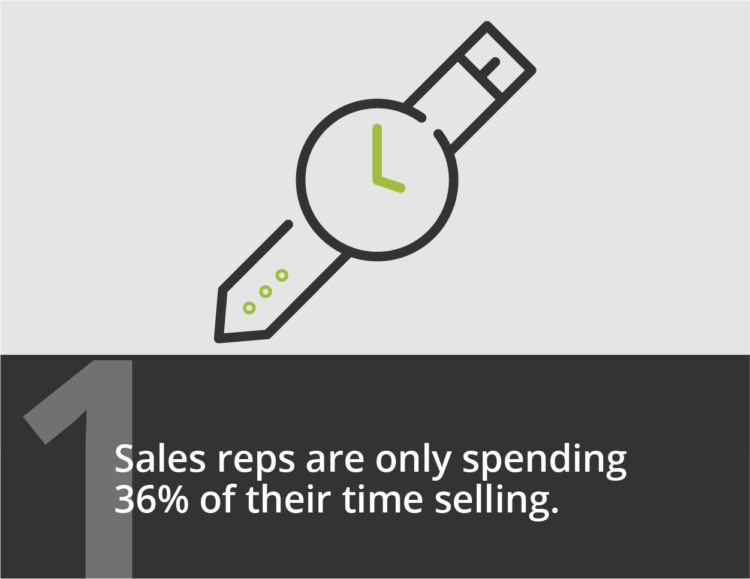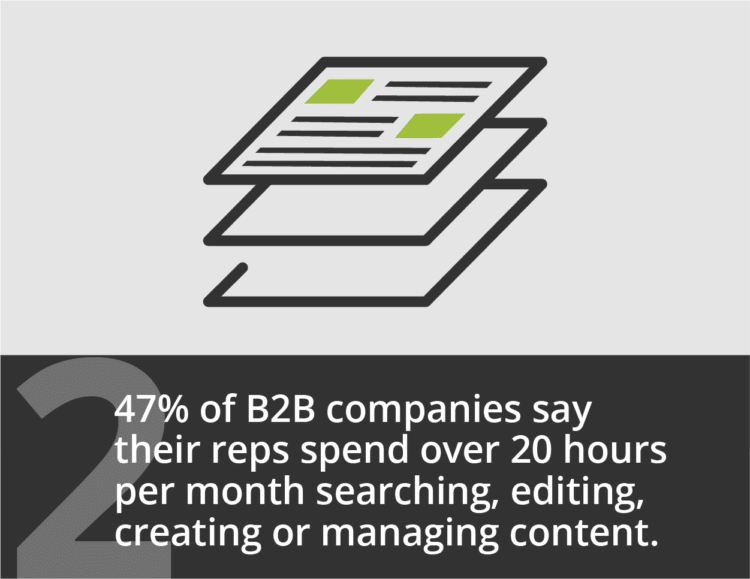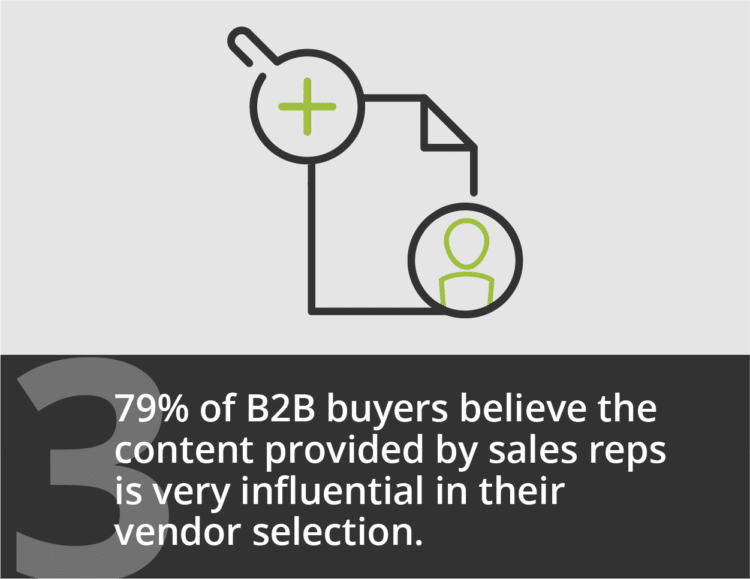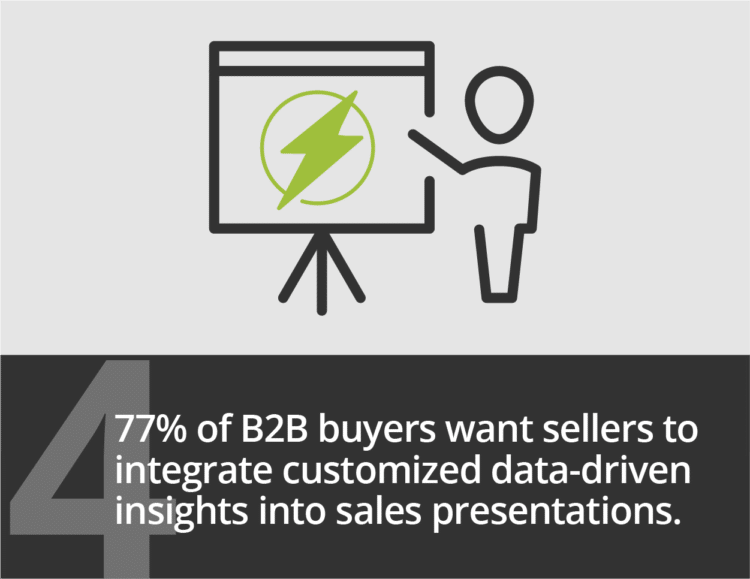One of the biggest roadblocks to implementing a sales enablement solution is securing buy-in from key internal stakeholders. What some stakeholders don’t realize is that there are many areas sales enablement touches in an organization; It’s not just about sellers. It’s about marketing alignment, sales collaboration, content management, customer experience, an understanding of key business metrics, and the opportunity to save time, reduce costs, and increase effectiveness and efficiency across the entire organization.
Don’t believe sales enablement can tackle all that? Keep reading to find out how.

Salespeople get tied down with administrative tasks such as searching for content, preparing decks for upcoming meetings, creating content when they can’t find what they need, logging meeting notes into a CRM and sending follow-up materials to prospects. How do they even have time to sell these days? With this stat, CSO Insights argues they don’t.
Eliminating roadblocks to sales efficiency and productivity is the first step towards increasing the success of your sales organization. A robust sales enablement solution integrates with CRM to allow data to be both pulled and pushed throughout the sales process. Content presented via your sales application in meetings and meeting notes are automatically pushed to CRM and attached directly to the opportunity or contact in your system. This new process reduces the time a sales rep would spend on this activity later and improves the quality of meeting follow-ups with real-time notes recorded and available at the reps’ fingertips.

On-demand access to the most relevant and recent marketing-approved materials solves the issue of wasted sales admin time. With over 60% of a seller’s time spent finding content and building presentations, a “one-stop shop” sales application allows easy discovery of assets whether you’re preparing for a meeting or pivoting topics in front of your customer.
Additionally, marketers can leverage a sales enablement solution to modularize content, reducing the risk of “rogue content” created by sellers. Marketers save valuable time for themselves and sellers while ensuring a consistent and engaging sales experience. They do this by creating dynamic content that can be modified to an extent by the seller to adapt to a buyer’s unique challenges and interests.

According to SiriusDecisions, an average of 17.3 pieces of content are consumed before a purchase, and winning reps are using 22% more content than runner-ups. Low performing reps tend to send too little content at the beginning of a sales process and over-compensate with too much content in later sales stages, overwhelming the buyer and impairing their ability to make a confident decision when it comes time to purchase.
Companies buy from companies who provide ample content throughout the process, but not just any content. The content provided needs to activate and inspire the buyer to positive change. Marketing teams can use sales enablement platforms to track content usage and measure which content performs best at each stage of the buying process to both optimize future content efforts and provide sales with invaluable insights to move deals forward.

Today’s B2B buyers have a wealth of information at their fingertips. They’re doing their own research on available solutions and entering the sales process later than ever. In fact, only 8% of B2B buyers believe sales interactions are valuable at all. To combat this notion, sellers must recognize that today’s buyers don’t want to be sold to and adjust their approach accordingly. To be successful, modern sales interactions need to focus less on what the product or service can do and more on what the product or service means to the buyer’s business.
Leveraging interactive sales presentation elements like ROI or TCO calculators helps differentiate sellers and gives them a competitive advantage. Using data to teach a buyer something new about their organization or industry, a sales rep can transform into a trusted advisor that gains the respect and attention of the buyer. Ultimately, buyers will look forward to the next sales interaction because it is so valuable. This unique data-driven approach shows buyers how a solution can impact their business.

Too many sales and marketing teams find themselves working independently from each other, despite their pursuit towards the same business goals. While marketing was once seen as the function to generate new leads, they play a larger role in today’s engagement with modern B2B buyers who expect a seamless experience from awareness to consideration to purchase.
Measuring the effectiveness of content during different stages of the sales process provides strategic insight into what it means to deliver the right content at the right time. With a strong understanding of buyers’ challenges and needs, marketing can create content that resonates, engages and activates prospects at each step of their journey. In fact, organizations with tightly aligned sales and marketing functions enjoy 36% higher customer retention rates and 38% higher sales win rates according to MarketingProfs.
To learn more about sales enablement capabilities and determine it’s ROI for your organization, contact Mediafly.

Comments are closed.